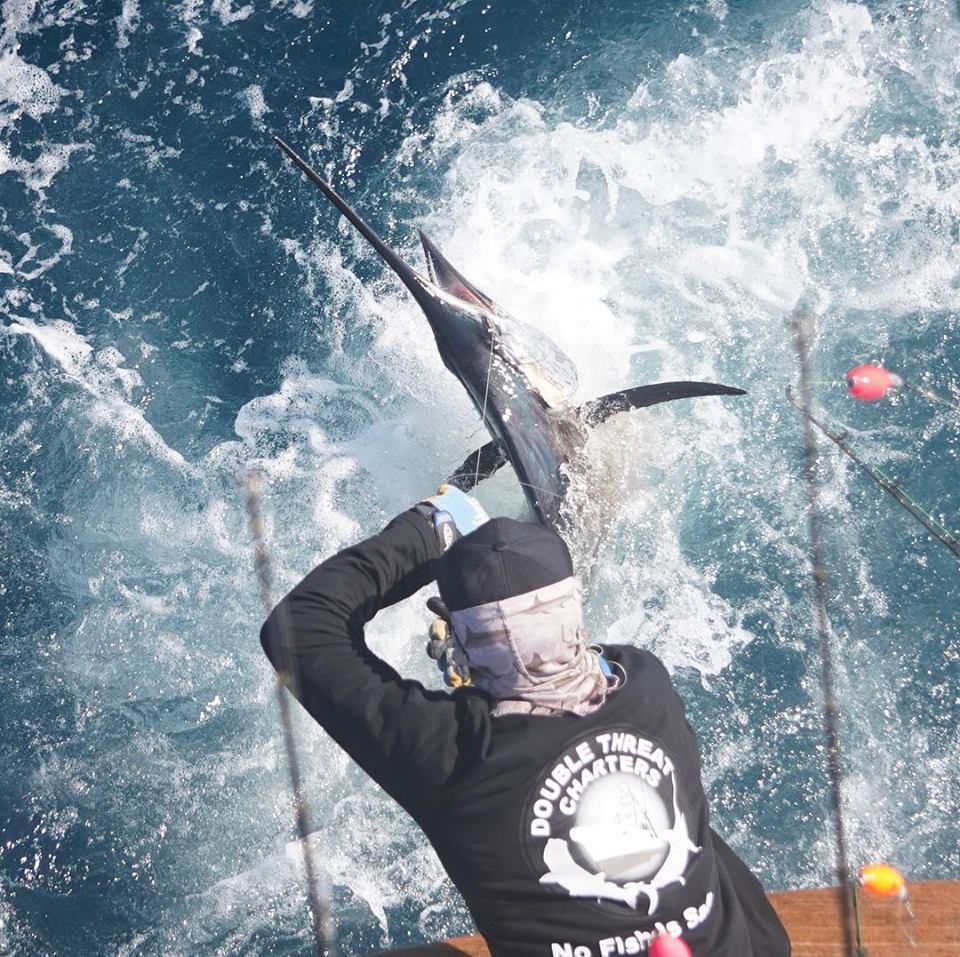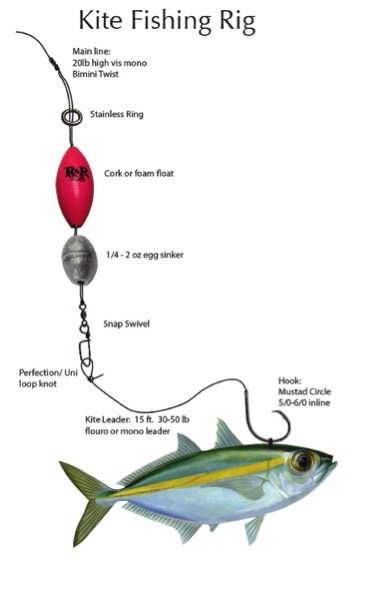Basic Kite Fishing Rig
Here are some tips and tricks to help you advance the basic kite fishing rig. First, let’s start with the basic rig.It consists of a kite leader, snap swivel, lead, cork and o-ring. If you’re new to kite fishing, the objective of kite fishing is rather simple: to fish live bait on the surface in the stealthiest way possible.
Kite Fishing allows you to keep the mainline out of the water, and fish your bait right on the water’s surface. The stainless o-ring at the top of the kite rig attaches to a tension release clip on the kite line. The cork or float is used as a visual indicator, not like a fresh water bobber. Lead is used to prevent the bait from coming out of the water.Wind pressure on the main line will blow small baits out the water on high wind days. Lastly, the snap swivel allows for rapid changing of leaders. This is the rig most beginner and advanced anglers use with some small variations. Once you understand the fundamentals of kite fishing, try some of these tips and tricks to improve your game and catch more fish.
Choosing Leads For Kite Fishing
Unless you’re kite fishing with less than 5 knot wind and helium balloons, you’ll need some lead on your rig. Typically, leads up to 2 oz is sufficient for conditions in the 5-30 knot range. Some anglers will lead their long baits slightly heavier than the mid and short and use different color floats for each position. Instead, try fishing all matching combos can save time when changing baits. This way, you don’t have to worry about which rods need to be in the short/mid/long positions after instances of multiple hookups or advancing baits on your kite line.
Put a Rubberband on the Rod Buts
Keeping a few heavy duty rubber bands on your rod buts gives you a quick release way to manage your kite leader. A 15 foot leader can be prone to tangling other tackle if not secured or wrapped up. The quickest and easiest way to stow them while fishing is to tuck the excess under a rubber band. Also, you can bridle a bait to place in a livewell and keep tension on the line so the bait doesn’t swim the leader into a knot.
Pre- Made Leader Spools
It should go without saying, but having several premade leaders is a must. I’d recommend having a 30# fluoro spool, 50# mono spool and one with wire and circle hooks for when toothy fish like mackerel are biting ferociously.
Zero Knot Wind Kite Fishing
Wind is almost essential to have when kite fishing. For a great spread with zero knots of wind try 2 balloons per kite line. One on the kite and one close to the mid clip. It also helps to bump the boat away from the kite while deploying the baits. Attach the balloon to the kite line with a piece of copper rigging wire, wax floss, or rubber band. It will give the midsection of your kite line lift and prevent it from sagging in the water. Be sure to attach the balloon securely, but also in a way that can be quickly removed so that you can access your long clip quickly.
Bridle Location
Bridle baits through the nose in weedy conditions or if you’ll be dragging baits through the water. Smaller scaled baits like small pilchards will swim more natural with a nose bridle. Otherwise, I prefer to back/shoulder bridle all my large baits. Give it a try and see the difference!

‹ Back












Comments